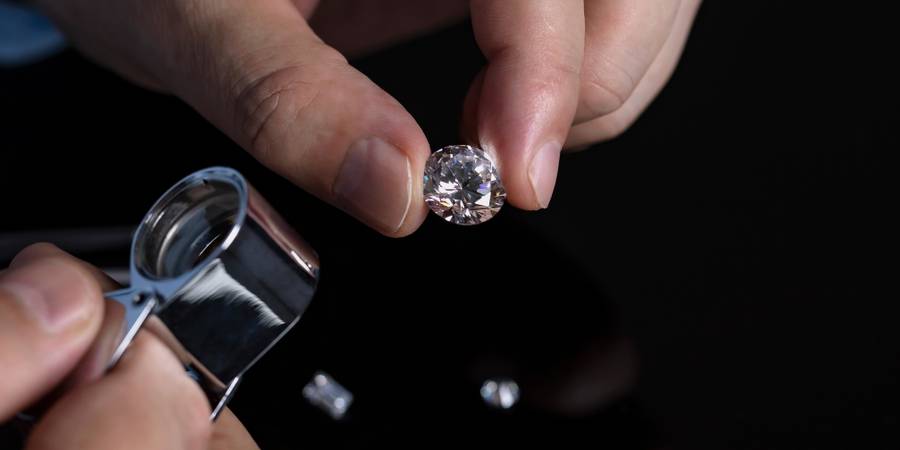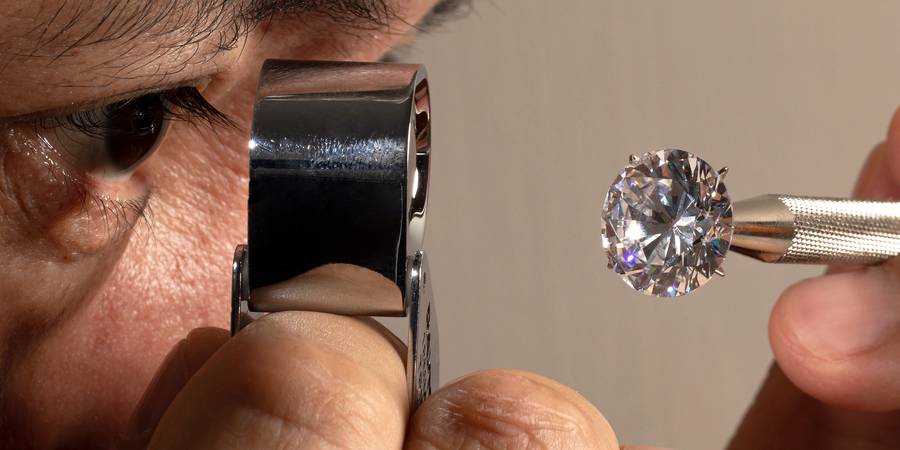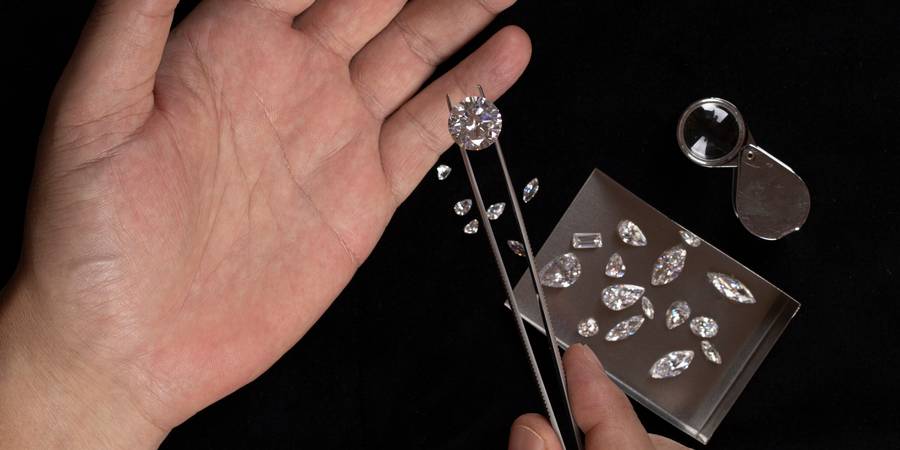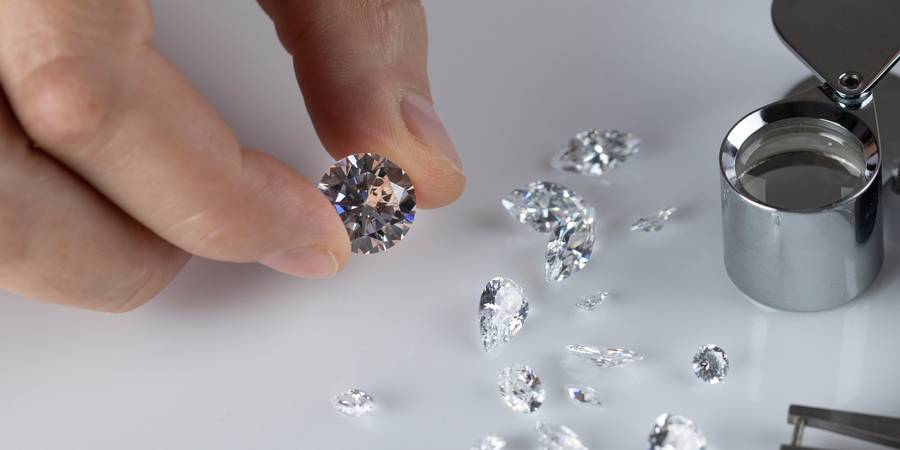Have you ever wondered why diamonds hold such immense value? Why are they so costly? These questions have likely crossed your mind when you’ve come across the price tags of these dazzling gemstones.
Diamonds, renowned as one of the most expensive stones in the world, play a significant role in modern society.
These radiant jewels, symbolizing love and passion, are predominantly featured in engagement rings, wedding bands, and other exquisite pieces of jewelry.
But what exactly contributes to the exceptional value of diamonds, and when did they become so highly sought after?
The simplest answer is that diamonds, formed billions of years ago, are incredibly rare, with only a select few surviving the arduous journey from deep within the earth to its surface.
However, rest assured, rarity alone does not solely determine their value and the high price attached to them. Historical events of great significance have also shaped the diamond market.
Let us delve into the origins of diamonds and explore why they have become the most coveted and precious gemstones of our time!
DESIGN YOUR OWN ENGAGEMENT RING: START WITH A SETTING OR START WITH A DIAMOND. IT’S REALLY UP TO YOU!

Diamond’s Over Time
To truly understand the essence of diamonds today, it is essential to delve into the past and uncover their origins and the factors that contribute to their current value.
The journey of a diamond’s worth traces back to the time of its discovery. Thousands of years ago, these magnificent stones were first found in Southern India, establishing India as the primary diamond producer. Over time, diamonds were also discovered in Brazil, South Africa, Venezuela, Russia, and Australia.
Presently, South Africa holds the distinction of being the world leader in diamond production, with the headquarters of DeBeers, the largest diamond company, located there. DeBeers possesses some of the world’s most valuable and extensive diamond mines, exerting a significant influence on the diamond industry.
Having explored the historical context, it is crucial to examine the various theories that elucidate why diamonds hold such immense value.
For thousands of years, diamonds have been one of the most sought-after and precious gemstones worldwide. As mentioned earlier, their rarity stems from the arduous journey they undertake from the depths of the earth to its surface, a process that took place billions of years ago.
Today, only half of the diamonds mined meet the high standards required to be sold on the diamond market. Throughout their journey, diamonds pass through the hands of numerous knowledgeable specialists, traversing four continents and touching the lives of countless individuals and families.
Until the 15th century, diamonds were exclusively worn by monarchs, symbolizing power and courage, and those adorned with diamonds were believed to be invincible.
Over time, diamonds became synonymous with love and romance. Their association with these sentiments can be traced back to their discovery. The word “diamond” itself originates from the Greek word meaning “unconquerable,” symbolizing the eternal essence of love. This aligns with Greek philosophy, which holds that the diamond’s radiant brilliance reflects the eternal flame of love.
The tradition of wearing a diamond ring on the third finger of a woman’s left hand can be traced back to ancient Egyptian beliefs. They believed that the “vein of love,” known as the vena amoris, ran directly from the heart to the top of the third finger on the left hand.
In contemporary times, the value of a diamond is often determined by evaluating its characteristics through the four C’s: color, clarity, cut, and carat.
Having explored the historical significance, let us now delve into the intricacies of the four C’s!

Four C’s
Diamonds, whether they are mined or lab-grown, undergo evaluation by gemologists based on the 4Cs of diamond quality: cut, color, carat, and clarity.
The Gemological Institute of America (GIA) has established a widely recognized grading system that assesses the value of a precious stone, taking into account the 4Cs, which also impact the price of a diamond.
The first C is the cut, which holds utmost importance in determining a diamond’s appearance. The cut influences its brightness, sparkle, cleanliness, and overall visual appeal. Additionally, the cut has a direct impact on the diamond’s price. The GIA assigns one of four cut grades to each diamond, affecting both its brilliance and cost.
The second C is carat, which refers to the weight measurement used to determine the size of a gemstone, including diamonds. Carat weight plays a role in assessing the quality of the diamond, with a higher carat weight indicating a larger size and, typically, a higher price.
The third C is clarity, an essential consideration when selecting a diamond. Clarity refers to the presence and visibility of internal characteristics called inclusions and surface flaws known as blemishes. The level of clarity affects the overall purity and visual appeal of the diamond.
Lastly, color is the fourth C. The color of a diamond directly impacts its quality. The highest-grade diamonds exhibit no color at all, while diamonds with more color, including shades of brown and yellow, are considered lower in grade.
By evaluating these four factors, gemologists and consumers can assess the quality, value, and desirability of a diamond.

What Makes Diamonds Valuable?
Diamonds hold immense value and are highly sought after across cultures. They are commonly used in various types of jewelry, including engagement rings and necklaces.
One notable diamond of great size, expense, and fame is the Koh-i-Noor Diamond. Believed to be cherished by the Hindu god Krishna, this diamond was found in India and passed down through the Indian court elite before eventually being looted and incorporated into the British Crown Jewels during the mid-19th century.
Beyond diamonds with cultural or religious significance, several factors influence the value of diamonds in general. These include the level of demand in the diamond industry, ethical sourcing practices, and the quality of the individual diamond itself.
Historically, diamonds have been associated with power, wealth, and social status, primarily due to their rarity. In the 1800s, a significant diamond deposit was discovered in Kimberly, South Africa. This find had the potential to flood the market with diamonds, which could have led to a decrease in their value.
However, De Beers, a prominent diamond company, intervened by purchasing the mine and tightly controlling the global diamond supply. De Beers carefully released only enough diamonds each year to meet the demand, creating the perception that diamonds were scarce.
This limited supply strategy drove up the price of diamonds. Throughout the 19th century, De Beers effectively maintained a monopoly on diamond mining by stockpiling diamonds, controlling supply, and creating artificial demand, thereby influencing pricing.
Additionally, De Beers launched extensive marketing campaigns to promote diamond engagement rings, replacing the tradition of using ruby and sapphire rings. This marketing effort, combined with the restricted supply, further elevated the overall cost of diamonds.
As a result, the past actions of De Beers played a significant role in determining the value of diamonds, a value that continues to grow even in present times.

The Diamond Industry
As previously mentioned, De Beers held a staggering 90% control over the raw diamond output during their campaign. By deliberately limiting the supply of diamonds, they effectively drove up prices.
Interestingly, despite the high demand for diamonds, they have relatively low resale value. When selling to a local jeweler, the average diamond fetches only 20 to 40% of its original price.
So, what’s the reason behind this apparent contradiction?
The diamond industry is tightly regulated and heavily promoted, allowing diamond vendors to sell at inflated prices. However, insiders reveal that these vendors are well aware of the true value of diamonds when you attempt to sell them back.
By restricting the availability of new diamonds, these companies create an artificial demand, and the limited supply drives up prices when they sell diamonds. However, this inflated value does not necessarily hold when you try to sell the diamond yourself.
All of this creates the illusion that diamonds are scarce and difficult to acquire, but it is merely a constructed narrative. While engagement rings and diamonds have become synonymous today, this was not always the case.
Returning to De Beers’ role in shaping the diamond market, they faced a significant decline in diamond sales during the Great Depression of the late 1920s and early 1930s. Holding total control over the market, De Beers experienced a severe revenue collapse.
To revive the diamond market, they launched an advertising campaign that introduced the iconic tagline “a diamond is forever.” This campaign successfully reestablished the association between diamonds and engagement rings, revitalizing the market and leaving a lasting cultural impact.

What Is the Real Cost of a Diamond?
While diamonds may not be as expensive as commonly believed in terms of their monetary value, they hold significant sentimental worth. Many couples still associate diamonds with love and choose to propose with a diamond engagement ring.
However, modern customers are starting to consider factors such as diamond pricing and ethical concerns.
Some individuals cannot afford the high prices of gem-quality diamonds, while others are deterred by the revelations of blood diamonds and environmental issues associated with the diamond mining industry.
Consumers are becoming more conscious of the unethical nature of natural diamonds and their origins.
As a result, concerned buyers are turning to “conflict-free” diamonds or even abandoning natural diamonds altogether in favor of lab-grown or synthetic alternatives.
In line with the growth of vintage trends, heirloom and antique pieces are also gaining popularity as diamond alternatives.
Now, let’s explore the origin of diamonds:
When shopping for diamond jewelry, you may come across the term “earth-mined diamonds.”
Why is this significant? It’s because diamonds are formed deep beneath the earth’s crust, and mining is necessary to extract them.
The diamond market emphasizes the idea that diamonds must be mined, adding value and status to the gem. They are not something easily obtained or replicated.
This is one of the reasons why diamonds carry a hefty price tag.
Obtaining diamonds from the earth’s depths and bringing them to a jewelry store involves an entire industry, scientific processes, geological resources, and the efforts of numerous individuals.
Now, let’s delve into some intriguing facts about the origins of diamonds:
Diamonds form deep within the earth’s crust, at depths beyond human reach.
Volcanic eruptions carry diamonds from the deep crust to the earth’s surface.
Volcanoes are the only means by which diamonds are brought up from the earth’s crust.
Diamonds must be extracted from lava eruptions that occurred millions of years ago.
Diamonds are not rare in existence, but they are unique in the sense that they are naturally inaccessible to humans, which adds to their value. However, this is not the sole reason for their high price.
The high price of diamonds can be attributed to the strategic actions of a single company – De Beers.
To summarize, diamonds are formed deep beneath the earth’s surface when carbon deposits undergo immense heat and pressure. Some diamonds form relatively quickly, while others take millions of years.
Most natural diamonds available on the market today are mined in countries such as South Africa, Russia, Australia, India, and Canada.
Diamonds can also be created in laboratories, where controlled environments simulate the intense pressure and temperature that natural diamonds experience.
Lab-grown diamonds have the same chemical composition as natural diamonds as they are made of carbon.

Final Thoughts
When exploring the frequently asked question of why diamonds are valuable, we aimed to provide a more comprehensive answer beyond the commonly cited reason of rarity.
In our exploration, we delved into the past, recognizing that history plays a significant role in understanding the value of diamonds.
We sincerely hope that we have successfully shed light on the historical context and value of diamonds, enriching your knowledge on the subject.
Lastly, we genuinely enjoyed the process of gathering information and crafting this article for you, and we hope you found it equally enjoyable to read.


